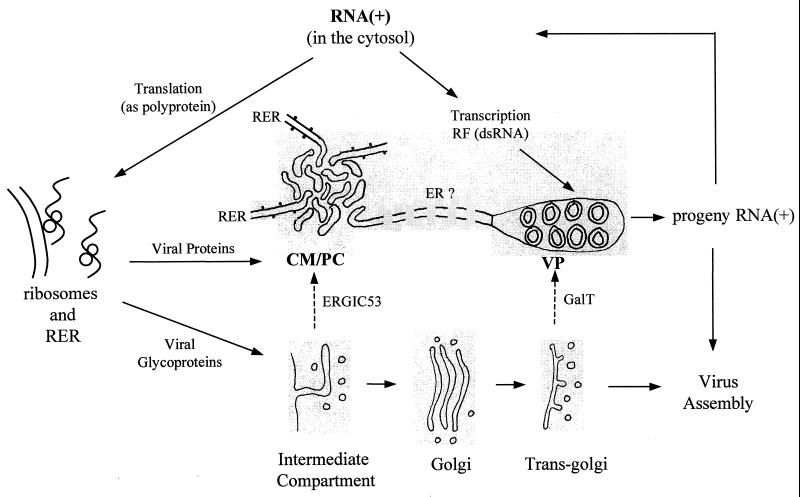FIG. 9.
Proposed model of the flavivirus replication cycle, showing the involvement late in infection of the cytosol, cell organelles, and induced membranes identified as CM, which appear to be interconvertible to PC, and as VP. Movements of viral RNA and proteins are indicated by solid arrows, and movements of the cell membrane markers GalT and ERGIC53 to induced membranes are indicated by broken arrows. Replication occurs in the following sequence: positive-strand RNA [RNA(+)] is translated from one long open reading frame, and the polyprotein is cleaved by signal peptidases in the lumen or by the viral protease NS2B-NS3 in the induced CM and PC (49). The RNA polymerase NS5 plus NS1 and unknown cofactors copy specifically RNA(+) into the dsRNA template or replicative form (RF) (5), which enters the induced VP and assembles with NS1-NS2A-NS3-NS4A-NS5 to form the replication complex (29, 49). Progeny RNA(+) is released to repeat the cycle or for assembly into virus particles, which accumulate in vesicles of the adjoining ER.

